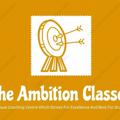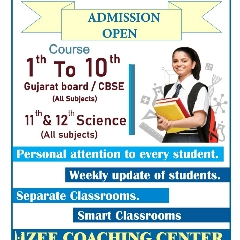Question 1 :
A tennis ball and a cricket ball, both are stationary. To start motion in them
Question 2 :
A force acts on an object which is free to move. If we know the magnitude of the force on the object and the mass of the object, Newton's 2nd law of motion enables us to determine the object's :<br/>
Question 3 :
A ball of mass M moving with a velocity V collides head on elastically with another of same mass but moving with a velocity v in the opposite direction. After collision,<br>
Question 4 :
A canon after firing recoils due to newton's third law of motion.<br>
Question 5 :
If the net force acting on a body is doubled, the acceleration of the body is
Question 6 :
The incorrect statement about newton's second law of motion is that:<br/>
Question 7 :
Assertion: The forces acting on a body can be replaced by the resultant force only as regards the motion of the body as a whole.
Reason: The resultant force can not replace the several forces acting on a body in other respects.
Question 8 :
Arrange the following basic forces in the increasing order of relative strength.<br>1.Gravitational force<br>2.Electromagnetic force<br>3.Weak nuclear force<br>4.Strong nuclear force
Question 9 :
Assertion: According to Newton's third law, the sum of action and reaction forces on a body is equal to zero.
Reason: The action and reaction forces act on different bodies.
Question 10 :
State whether true or false.<br/>Newton's second law gives the measure of force.
Question 11 :
State whether given statement is True or False.<br/>In the second law, $F=0$ implies $a=0$. The second law is obviously consistent with the first law<br/>
Question 12 :
State whether given statement is True or False.<br/>An object experiences a net zero external unbalanced force. Is it possible for the object to be travelling with a non-zero velocity?<br/>
Question 13 :
Assertion (A): According to Newton’s third law sum of action and reaction is not equal to zero Reason (R) : The forces action and reaction acts on different bodies.
Question 15 :
Two bodies P and Q of masses $m_{1}$ and $m_{2}$ ( $m_{2}$ > $m_{1}$ )  are moving with velocity $v_{1}$ and $v_{2}$  respectively, collide with each other. Then the force exerted by P on Q during the collision is:<br/>
Question 16 :
A machine gun fires $n$ bullets per second and the mass of each bullet is $m$. If the speed of bullets is $v$, then the force exerted on the machine gun is
Question 18 :
State whether given statement is True or False.<br/>Force never exists in pairs.
Question 19 :
Which of the following safety features are used in vehicles to reduce the negative effects of inertia?<br><table class="wysiwyg-table"><tbody><tr><td>(i)Safety seat belts<br>(ii)Automatic air bags<br>(iii)Absorber bumpers<br></td></tr></tbody></table>
Question 20 :
A driver accelerates his car first at the rate of $1.8 {m}/{{s}^{2}}$ and then at the rate of $1.2 {m}/{{s}^{2}}$. The ratio of the forces exerted by the engines will be respectively equal to
Question 22 :
A driver accelerates his car first at the rate of1.8 m/s$^2$ and then at the rate of 1.2 m/s$^2$. The ratio of the forces exerted by the engines will be respectively equal to
Question 23 :
Which of the following statement best describe the Newton's second law of motion.<br/>
Question 25 :
A 10 N force applied on a body produces in it an acceleration of $2 \,m\, s^{-2}$, then the mass of the body is ______.
Question 26 :
'The action and reaction are equal in magnitude'. Is this statement true and which law is related with it?
Question 28 :
In a game of tug of wars, a condition of equilibrium exists. Both the teams pull the rope with a force of 10$^4$ N. The tension in the rope is :<br>
Question 30 :
In a tug-of-war between the teams A and B, the rope breakes at a point which is nearer to A. Then
Question 32 :
Assertion: A reference frame attached to the earth is an inertial frame of reference.
Reason: Newton's laws can be applied in this frame of reference.
Question 33 :
On a body of mass $m_1$ certain force is applied which produces an acceleration of 6 m s$^{-2}$. The same force applied on mass $m_2$ gives it an acceleration of 4 m s$^{-2}$. If two masses are fixed together and the same force is applied to the combination then find the acceleration it would produce.<br/>
Question 34 :
A scooter of mass 120 kg is moving with a uniform velocity of 108 km/h. The force required to stop the vehicle in 10 sec is :
Question 35 :
If set of forces acting on a body are balanced, the body
Question 36 :
One Newton is the force, which produces an acceleration of :<br/>
Question 37 :
A body of mass 2 kg is sliding with a constant velocity of 4 m/sec on a frictionless horizontal table. The force required to keep the body moving with the same velocity is
Question 38 :
State whether the given statement is True or False :<br/>Both momentum and kinetic energy are conserved in all collisions.
Question 39 :
If both the mass of a body and the force acting on it are doubled, the acceleration:
Question 40 :
A ball falls freely towards the Earth. If the action force is the Earth pulling down on the ball, then identify which of the following best describe the reaction force:<br/>
Question 41 :
Which of the following Newton's law(s) is/are not applicable in non-inertial reference frame.
Question 43 :
A 60 kg man pushes a 40 kg man with a force of 60 N. With what force does the 40 kg man push the other man?
Question 45 :
A cricket ball hits and breaks a glass window and ends up inside the house. Identify which of the following statement is correct about the ball?
Question 46 :
What isan expression for the force due to gravity on a body of mass $m$ ?
Question 47 :
Assertion: The greater the rate of the change in the momentum vector, the greater the force applied.
Reason: Newton's second law is $\overrightarrow { F } =\frac { d\overrightarrow { P } }{ dt } $.
Question 48 :
A fish is swimming in the ocean. Which of the following represents the interaction between the fish and the water?<br/>
Question 49 :
Complete the following sentence:<br/>$\dfrac{Mass \times change\   in\   velocity}{ time  \ interval} $  =<br/>
Question 50 :
A force of a given magnitude acts on a body. On what factors does the acceleration of the body depend?
Question 51 :
Statement A: When a person is on the floor of a lift which is at rest, the reaction force on him is equal to his weight.<br/>Statement B: When the lift is moving with uniform velocity, then the apparent weight of the man is zero.
Question 52 :
A block of weight 9.8 N is placed on a table. The table surface exerts an upward force of 10 N on the block. (Given g $=$ 9.8 m/s$^2$) This follows from:
Question 53 :
A ball weighing $10\ gm$ hits a hard surface vertically with a speed of $5\ { ms }^{ -1 }$ and rebounds with the same speed. The ball remains in contact with the surface for $0.01 s$. The average force exerted by the surface on ball is :<br/>
Question 54 :
In a tug-of-war between the teams A and B, therope breakes at a point which is nearer to A. Then<br><br>
Question 56 :
A man pushes against a rigid fixed vertical wall. which of the following is (are) the most accurate statement(s) related to the situation? 
Question 58 :
Assertion: In some situations, friction facilitates the motion and in some situations, it oppose the motion.
Reason: Friction force always oppose the relative motion between surface in contact
Question 59 :
A gun fires 100 bullet/minute with muzzle speed 600 m/s. If each bullet is of mass 5 g, then amount of force needed to hold the gun in position is
Question 60 :
A person holding a rifle (mass of person and rifle together is 100 kg) stands on a smooth surface and fires 10 shots horizontal, in 2 s. Each bullet has a mass of 10 g with a muzzle velocity of $800{ ms }^{ -1 }.$ The final velocity acquired by the person and the average force exerted on the person are
Question 61 :
A member of fire-bridge spraying water at the rate of $30\ cm^{3}s^{-1}$ from the pipe of $1\ cm$ diameter to control the fire. What is the force of reaction acting on him?
Question 62 :
From a stationary tank of mass $125000$ pound a small shell of mass $25$ pound is fired with a muzzle velocity of $1000\ ft/sec$. The tank recoils with a velocity of ..........
Question 64 :
Assertion: There is no cause-effect relation between action and reaction.
Reason: Action and reaction forces are not simultaneous forces.
Question 65 :
A balloon of weight w is falling vertically downward with a constant acceleration a(<g).Th magnitude of the air resistance is:
Question 66 :
In a tug of war contest, two groups of people pull on a horizontal rope from the two ends. The winning group will be one which-
Question 67 :
A $60$ kg man pushes a $40$ kg man by a force of $60$N. The $40$ kg man has pushed the other man with a force of?
Question 68 :
A vertical tank, open at the top, is filled with a liquid and rests on a smooth horizontal surface. A small hole is opened at the center of one side of the tank. The area of a cross-section of the tank is $N$ times the area of the hole, where $N$ is a large number. Neglect mass of the tank itself. The initial acceleration of the tank is:
Question 69 :
A car of mass 400 kg travelling at 72 kmph crashes a truck of mass 4000 kg and travelling at 9 kmph in the same direction. The car bounces back with a speed of 18 kmph. The speed of the truck after the impact is<br>
Question 70 :
A green cart is less massive than a red cart. Both carts are on a frictionless horizontal track where they can only travel along the same straight line. The green cart bumps into the stationary red cart.<br>As a result of the collision, the red cart moves forward in the direction of the green cart's original velocity. The green cart bounces off the red cart and moves backward.<br>How does the magnitude of the red cart's momentum after the collision compare with the magnitude of the green cart's momentum before the collision?
Question 71 :
A particle of mass $m_{1}$ moving with a velocity of $5m/s$ collides head on with a stationary particle of mass $m_{2}$. After collision both the particle move with a common velocity of $4m/s$, then the value $m_<br/>{1}/m_{2}$ is:<br/>
Question 72 :
Two solid rubber balls $A$ and $B$ having masses $200\ \&\ 400\ \text{gm}$ respectively are moving in opposite direction with velocity of $A$ equal to $0.3\ \text{m/sec}.$ After collision the two balls come to rest when the velocity of $B$ is :<br>
Question 73 :
Assertion: A particle strikes head-on with another stationary particle such that the first particle comes to rest after collision. The collision should necessarily be elastic.
Reason: In elastic collision, there is a loss of momentum of the system of the particles.
Question 74 :
A girl of mass 50 kg standing on a rail road car of mass 75 kg moving with velocity 20 m/s. Now, the girl begins to run with velocity of 10 m/s with respect to the car in the same direction. as that of the car. Velocity of the car at this instant will be
Question 75 :
When an electron and a positron meet at low speed in empty space, they annihilate each other to produce two $0.511-MeV$ gamma rays. What law would be violated if they produced one gamma-ray with the energy of $1.02\, MeV$? 
Question 76 :
A box is put on a scale which is adjusted to read zero,when the box is empty. A stream of pebbles is then poured into the box from a height h above its bottom at a rate of n pebbles collide with the box such that they immediately come to rest after collision, the scale reading at time t after the pebbles begin to fill the box is :
Question 77 :
A ball$A$ is moving with velocity $5 m/s$ collides elastically with another identical ball $B$ which is initially at rest such that the velocity of $B$ after the collision makes an angle of $37^\circ $ with the initial velocity of $A$. Then the <b>INCORRECT</b>  statement is :
Question 78 :
A $7500\ kg$ rocket is set for vertical firing. The exhaust speed is $800\ m/s$ w.r.t. rocket. To give an vertical upward acceleration of $10{m/s^2}$, the amount of gas ejected per second for the needed thrust will be
Question 79 :
A ball collides elastically with another ball of the same mass. The collision is oblique and initially one of the ball was at rest. After the collision, the two balls move with same speeds. What will be the angle between the velocity of the balls after the collision?
Question 80 :
A body of mass 5 kg moving with a speed of $ 3 ms^{-1}$collides head on with a body of mass 3 kg moving in the opposite direction at a speed of $2 ms^{-1}$. The first body stops after the collision. Find the final velocity of the second body.<br>
Question 81 :
 A heavier body moving with certain velocity collides head on elastically with a lighter body at rest. Then<br/>
Question 82 :
A ball of mass $m$ moving with velocity $v$ collides elastically with wall and rebounds. The change in momentum of the ball will be :
Question 83 :
A bullet of mass $0.01 kg$ moving at a speed of $500 m/sec$, strikes a block of mass $2 kg$, suspended by a rope of length $5 m$. If the block rises to a height of $0.1 m$, then with what velocity does the bullet emerge from the block? <br>
Question 84 :
A 6 kg mass travelling at $2.5$ ms$^{-1}$collides head on with a stationary 4 kg mass. After the collision the 6 kg mass travels in its original direction with a speed of $1$ ms$^{-1}$. The final velocity of 4 kg mass
Question 85 :
The momentum of a body of given mass is proportional to its:
Question 87 :
A bullet weighing 10 g and moving at 300 ms$^{-1}$ strikes a 5 kg block of ice and drops dead. The ice block is sitting on frictionless level surface. The speed of the block, after the collision is :
Question 88 :
A rocket is propelled by a gas which is initially at a temperature of $4000 \ K$. The temperature of the gas falls to $1000 \ K$ as it leaves theexhaust nozzle. The gas which will acquire the largest momentum<br>while leaving the nozzle is
Question 89 :
A rocket is ejecting $50g$ of gases per sec at a speed of $500m /s$.<br>The accelerating force on the rocket will be
Question 90 :
In an elastic collision of two particles the following is conserved
Question 91 :
Assertion: Water at the foot of the water fall is always at different temperature from that at the top.
Reason: The potential energy of water at the top is converted into heat energy during falling
Question 92 :
A wagon of mass 10 tons moving at a speed of 12 kmph collides with another wagon of mass 8 tons moving on the same track in the same direction at a speed of 10 kmph. If the speed of the first wagon decreases to 8 kmph. Find the speed of the other after collision
Question 93 :
Write true or false for the following statements:<br>Impulse represents the rate of change of momentum of a body.
Question 94 :
A bullet loses 1/20 of its initial velocity after penetrating a plank. How many plank's required to stop the bullet?
Question 95 :
A bullet stops after travelling a distance of x m , under the action of a uniform retarding force. How far will it go before being stopped by the same force if its velocity is doubled.
Question 98 :
N bullets each of mass $m \ kg$ are fired with a velocity $v \ ms^{-1}$ at the rate of n bullets per second upon a wall. The reaction offered by the wall to the bullets is given by
Question 99 :
A man fires a bullet of mass $200 g$ at a speed of $5 m/s$. The gun is of one kg mass. The velocity with which the gun will recoil backward is
Question 100 :
Assertion: A bullet is fired from a rifle. If the rifle recoils freely, the kinetic energy of rifle is more than that of the bullet.
Reason: In the case of rifle bullet system the law of<br>conservation of momentum violates.




























